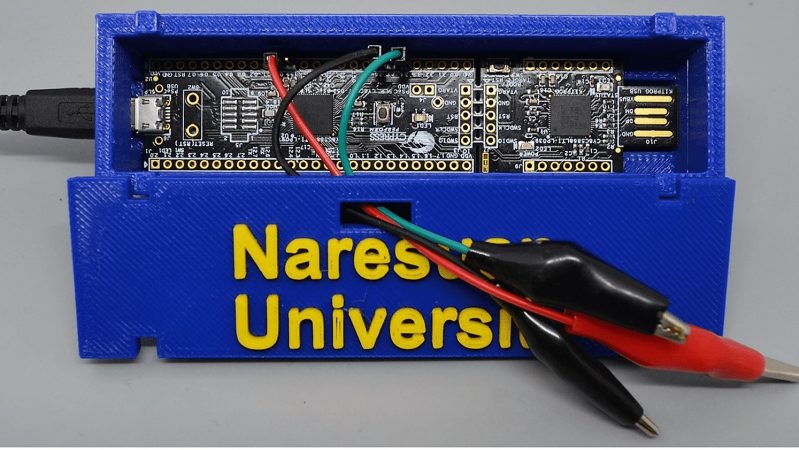You may think electrochemistry sounds like an esoteric field where lab-coated scientists labor away over sophisticated instruments and publish papers that only other electrochemists could love. And you’d be right, but only partially, because electrochemistry touches almost everything in modern life. For proof of that look no further than your nearest pocket, assuming that’s where you keep your smartphone and the electrochemical cell that powers it.
Electrochemistry is the study of the electrical properties of chemical reactions and does indeed need sophisticated instrumentation. That doesn’t mean the instruments have to break the grant budget, though, as [Kyle Lopin] shows with this dead-simple potentiostat built with one chip and one capacitor. A potentiostat controls the voltage on an electrode in an electrochemical cell. Such cells have three electrodes — a working electrode, a reference electrode, and a counter electrode. The flow of electrons between these electrodes and through the solutions under study reveal important properties about the reduction and oxidation states of the reaction. Rather than connect his cell to an expensive potentiostat, [Kyle] used a Cypress programmable system-on-chip development board to do everything. All that’s needed is to plug the PSoC into a USB port for programming, connect the electrodes to GPIO pins, and optionally add a 100 nF capacitor to improve the onboard DAC’s accuracy. The video below covers the whole process, albeit with a barely audible voiceover.
Still not sure about electrochemistry? Check out this 2018 Hackaday Prize entry that uses the electrochemistry of life to bring cell phones back to life.
















GRBL port, electrochemistry… this PSoC sure starts looks interesting. Same deal as ex after few bottles.
One CHIP? I spot several… anyway, good build other than the HORRENDOUS hackaday.io completely useless interface (once again: compare with instructables and learn how to set-up things).
Click rate is what matter, not user convenience or clarity. 14k won’t do itself.
There is a programmer on the board.
The chip on the small section on the right is the onboard programming/debug tool. You can snap off that part of the board if you want.
Or you could use the Analog Devices ADuCM355 with two pstats and a frequency response analyser (Impedance measurement) on a chip.
http://www.analog.com/en/products/processors-dsp/microcontrollers/ultra-low-power-microcontrollers/aducm355.html
+1 :)
How to increase the number Of cycle for CV analysis